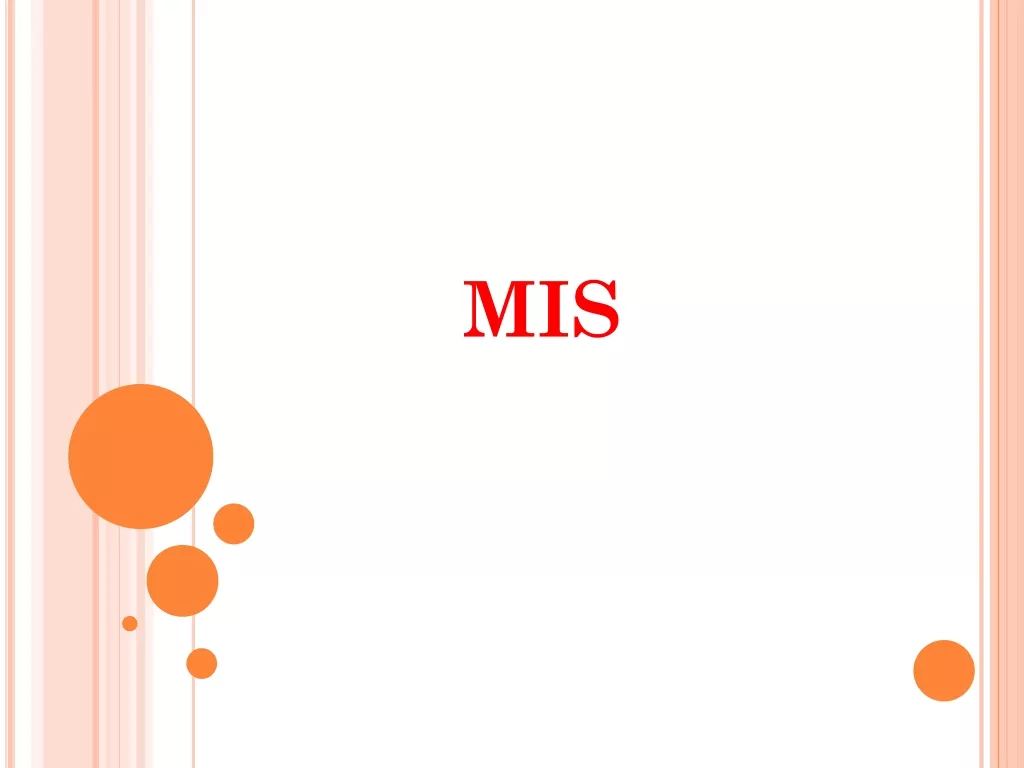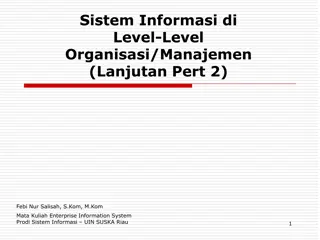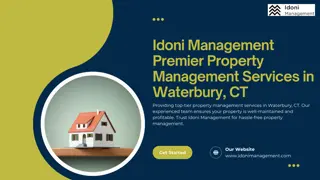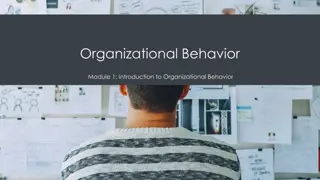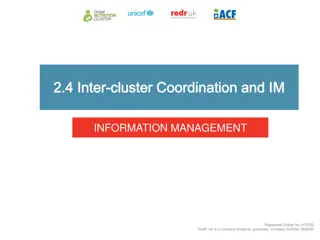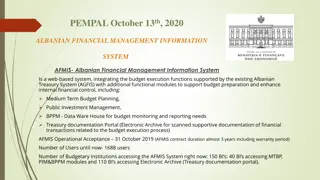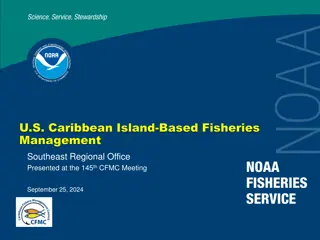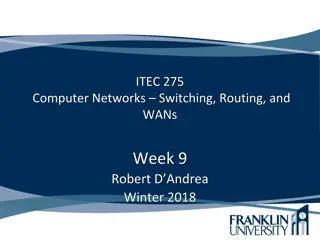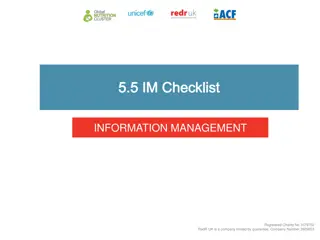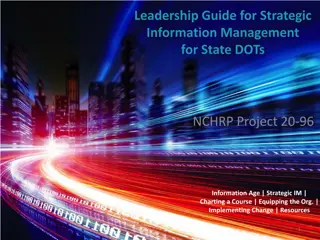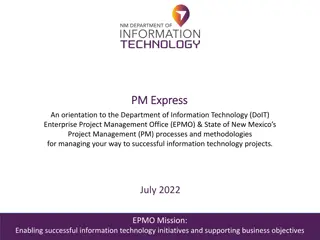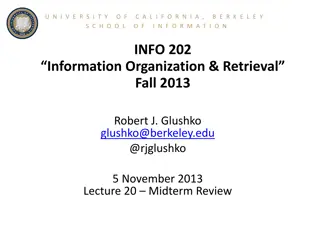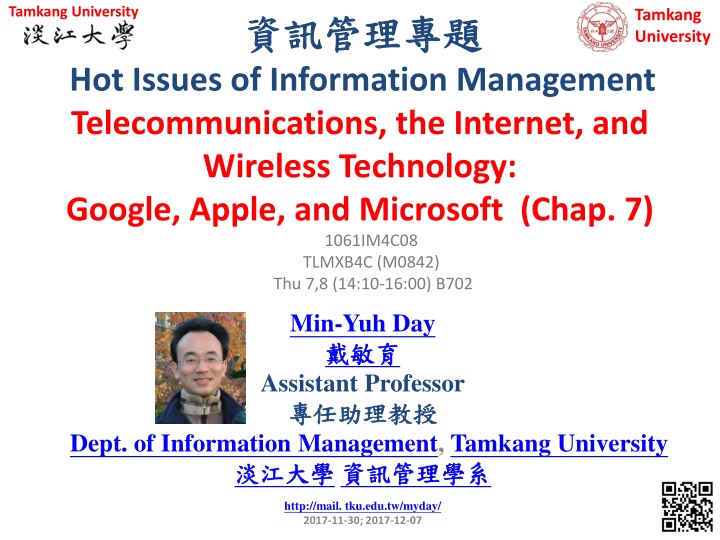
Telecommunications, Internet, and Wireless Technology: Google, Apple, and Microsoft Business Analysis
Dive into the competitive landscape among tech giants Apple, Google, and Microsoft in the realm of telecommunications, the internet, and wireless technology. Explore their business models, strengths, and mobile computing strategies. Discover why mobile platforms are vital for their success and how they vie for dominance in the digital sphere.
Download Presentation

Please find below an Image/Link to download the presentation.
The content on the website is provided AS IS for your information and personal use only. It may not be sold, licensed, or shared on other websites without obtaining consent from the author. If you encounter any issues during the download, it is possible that the publisher has removed the file from their server.
You are allowed to download the files provided on this website for personal or commercial use, subject to the condition that they are used lawfully. All files are the property of their respective owners.
The content on the website is provided AS IS for your information and personal use only. It may not be sold, licensed, or shared on other websites without obtaining consent from the author.
E N D
Presentation Transcript
Tamkang University Tamkang University Hot Issues of Information Management Telecommunications, the Internet, and Wireless Technology: Google, Apple, and Microsoft (Chap. 7) 1061IM4C08 TLMXB4C (M0842) Thu 7,8 (14:10-16:00) B702 Min-Yuh Day Assistant Professor Dept. of Information Management, Tamkang University http://mail. tku.edu.tw/myday/ 2017-11-30; 2017-12-07 1
(Syllabus) (Week) (Date) (Subject/Topics) 1 2017/09/21 Introduction to Case Study for Hot Issues of Information Management 2 2017/09/28 Information Systems in Global Business: UPS (Chap. 1) (pp.53-54) 3 2017/10/05 Global E-Business and Collaboration: P&G (Chap. 2) (pp.84-85) 4 2017/10/12 Information Systems, Organization, and Strategy: Starbucks (Chap. 3) (pp.129-130) 5 2017/10/19 Ethical and Social Issues in Information Systems: Facebook (Chap. 4) (pp.188-190) 6 2017/10/26 IT Infrastructure and Emerging Technologies: Amazon and Cloud Computing (Chap. 5) (pp. 234-236) 2
(Syllabus) (Week) (Date) (Subject/Topics) 7 2017/11/02 IT Infrastructure and Emerging Technologies: Amazon and Cloud Computing (Chap. 5) (pp. 234-236) 8 2017/11/09 Foundations of Business Intelligence: IBM and Big Data (Chap. 6) (pp.261-262) 9 2017/11/16 Midterm Report ( ) 10 2017/11/23 Midterm Exam Week ( ) 11 2017/11/30 Telecommunications, the Internet, and Wireless Technology: Google, Apple, and Microsoft (Chap. 7) (pp.318-320) 12 2017/12/07 Telecommunications, the Internet, and Wireless Technology: Google, Apple, and Microsoft (Chap. 7) (pp.318-320) 3
(Syllabus) Subject/Topics 13 2017/12/14 Enterprise Applications: Summit and SAP (Chap. 9) (pp.396-398) 14 2017/12/21 E-commerce: Zagat (Chap. 10) (pp.443-445) 15 2017/12/28 Enhancing Decision Making: Zynga (Chap. 12) (pp.512-514) 16 2018/01/04 Final Report I ( I) 17 2018/01/11 Final Report II ( II) 18 2018/01/18 Final Exam Week ( ) 4
Management Information Systems: Managing the Digital Firm 1 2 Organization, Management, and the Networked Enterprise Information Technology Infrastructure 3 4 Key System Applications for the Digital Age Building and Managing Systems 5 Source: Kenneth C. Laudon & Jane P. Laudon (2014), Management Information Systems: Managing the Digital Firm, Thirteenth Edition, Pearson.
Chap. 7 Telecommunications, the Internet, and Wireless Technology: Google, Apple, and Microsoft 6
Case Study: Google, Apple, and Microsoft (Chap. 7) (pp. 318-320) Apple, Google, and Microsoft Battle for Your Internet Experience 1. Define and compare the business models and areas of strength of Apple, Google, and Microsoft. 2. Why is mobile computing so important to these three firms? Evaluate the mobile platform offerings of each firm. 3. What is the significance of applications and app stores, and closed vs. open app standards to the success or failure of mobile computing? 4. Which company and business model do you believe will prevail in this epic struggle? Explain your answer. 5. What difference would it make to a business or to an individual consumer if Apple, Google, or Microsoft dominated the Internet experience? Explain your answer. 7 Source: Kenneth C. Laudon & Jane P. Laudon (2014), Management Information Systems: Managing the Digital Firm, Thirteenth Edition, Pearson.
Overview of Fundamental MIS Concepts Business Challenges Management Information System Business Solutions Organization Technology 8 Source: Kenneth C. Laudon & Jane P. Laudon (2014), Management Information Systems: Managing the Digital Firm, Thirteenth Edition, Pearson.
Business Model 2 8 7 4 1 Key Customer Relationships Activities Value Proposition Key Customer Segments Partners 6 3 Key Channels Resources 9 5 Cost Revenue Streams Structure 9 Source: Alexander Osterwalder & Yves Pigneur, Business Model Generation: A Handbook for Visionaries, Game Changers, and Challengers, Wiley, 2010.
Business Model 2 What? 8 7 4 1 Key Customer Relationships Activities Value Proposition Key Customer Segments Partners 6 3 Who? Key How? Channels Resources Why? 9 5 Cost Revenue Streams Structure 10 Source: Alexander Osterwalder & Yves Pigneur, Business Model Generation: A Handbook for Visionaries, Game Changers, and Challengers, Wiley, 2010.
Components of a Simple Computer Network 11 Source: Kenneth C. Laudon & Jane P. Laudon (2014), Management Information Systems: Managing the Digital Firm, Thirteenth Edition, Pearson.
Corporate Network Infrastructure 12 Source: Kenneth C. Laudon & Jane P. Laudon (2014), Management Information Systems: Managing the Digital Firm, Thirteenth Edition, Pearson.
Packet-Switched Networks and Packet Communications 13 Source: Kenneth C. Laudon & Jane P. Laudon (2014), Management Information Systems: Managing the Digital Firm, Thirteenth Edition, Pearson.
The Transmission Control Protocol/Internet Protocol (TCP/IP) Reference Model 14 Source: Kenneth C. Laudon & Jane P. Laudon (2014), Management Information Systems: Managing the Digital Firm, Thirteenth Edition, Pearson.
Functions of the Modem 15 Source: Kenneth C. Laudon & Jane P. Laudon (2014), Management Information Systems: Managing the Digital Firm, Thirteenth Edition, Pearson.
The Domain Name System 16 Source: Kenneth C. Laudon & Jane P. Laudon (2014), Management Information Systems: Managing the Digital Firm, Thirteenth Edition, Pearson. Source: Kenneth C. Laudon & Jane P. Laudon (2014), Management Information Systems: Managing the Digital Firm, Thirteenth Edition, Pearson.
Internet Network Architecture 17 Source: Kenneth C. Laudon & Jane P. Laudon (2014), Management Information Systems: Managing the Digital Firm, Thirteenth Edition, Pearson.
Client/Server Computing on the Internet 18 Source: Kenneth C. Laudon & Jane P. Laudon (2014), Management Information Systems: Managing the Digital Firm, Thirteenth Edition, Pearson.
How Voice over IP Works 19 Source: Kenneth C. Laudon & Jane P. Laudon (2014), Management Information Systems: Managing the Digital Firm, Thirteenth Edition, Pearson.
A Virtual Private Network Using the Internet 20 Source: Kenneth C. Laudon & Jane P. Laudon (2014), Management Information Systems: Managing the Digital Firm, Thirteenth Edition, Pearson.
The Global Internet Search engines Started as simpler programs using keyword indexes Google improved indexing and created page ranking system Mobile search: 20% of all searches in 2012 Search engine marketing Major source of Internet advertising revenue Search engine optimization (SEO) Adjusting Web site and traffic to improve rankings in search engine results 21 Source: Kenneth C. Laudon & Jane P. Laudon (2014), Management Information Systems: Managing the Digital Firm, Thirteenth Edition, Pearson.
The Global Internet Social search Google +1, Facebook Like Semantic search Anticipating what users are looking for rather than simply returning millions of links Intelligent agent shopping bots Use intelligent agent software for searching Internet for shopping information 22 Source: Kenneth C. Laudon & Jane P. Laudon (2014), Management Information Systems: Managing the Digital Firm, Thirteenth Edition, Pearson.
Top U.S. Web Search Engines 23 Source: Kenneth C. Laudon & Jane P. Laudon (2014), Management Information Systems: Managing the Digital Firm, Thirteenth Edition, Pearson.
How Google Works 24 Source: Kenneth C. Laudon & Jane P. Laudon (2014), Management Information Systems: Managing the Digital Firm, Thirteenth Edition, Pearson.
Web 2.0 Second-generation services Enabling collaboration, sharing information, and creating new services online Features Interactivity Real-time user control Social participation (sharing) User-generated content 25 Source: Kenneth C. Laudon & Jane P. Laudon (2014), Management Information Systems: Managing the Digital Firm, Thirteenth Edition, Pearson.
Web 2.0 services and tools Blogs: chronological, informal Web sites created by individuals RSS (Really Simple Syndication): syndicates Web content so aggregator software can pull content for use in another setting or viewing later Blogosphere Microblogging Wikis: collaborative Web sites where visitors can add, delete, or modify content on the site Social networking sites: enable users to build communities of friends and share information 26 Source: Kenneth C. Laudon & Jane P. Laudon (2014), Management Information Systems: Managing the Digital Firm, Thirteenth Edition, Pearson.
Web 3.0: The Semantic Web A collaborative effort led by W3C to add layer of meaning to the existing Web Goal is to reduce human effort in searching for and processing information Making Web more intelligent and intuitive Increased communication and synchronization with computing devices, communities Web of things Increased cloud computing, mobile computing 27 Source: Kenneth C. Laudon & Jane P. Laudon (2014), Management Information Systems: Managing the Digital Firm, Thirteenth Edition, Pearson.
A Bluetooth Network (PAN) 28 Source: Kenneth C. Laudon & Jane P. Laudon (2014), Management Information Systems: Managing the Digital Firm, Thirteenth Edition, Pearson.
An 802.11 Wireless LAN 29 Source: Kenneth C. Laudon & Jane P. Laudon (2014), Management Information Systems: Managing the Digital Firm, Thirteenth Edition, Pearson.
How RFID Works 30 Source: Kenneth C. Laudon & Jane P. Laudon (2014), Management Information Systems: Managing the Digital Firm, Thirteenth Edition, Pearson.
A Wireless Sensor Network 31 Source: Kenneth C. Laudon & Jane P. Laudon (2014), Management Information Systems: Managing the Digital Firm, Thirteenth Edition, Pearson.
Case Study: Summit and SAP (Chap. 9) (pp. 396-398) Summit Electric Lights Up with a New ERP System 1. Which business processes are the most important at Summit Electric Supply? Why? 2. What problems did Summit have with its old systems? What was the business impact of those problems? 3. How did Summit s ERP system improve operational efficiency and decision making? Give several examples. 4. Describe two ways in which Summit s customers benefit from the new ERP system. 5. Diagram Summit s old and new process for handling chargebacks. 32 Source: Kenneth C. Laudon & Jane P. Laudon (2014), Management Information Systems: Managing the Digital Firm, Thirteenth Edition, Pearson.
(Hot Issues of Information Management) 1. 2. 3. 4. 7,8 (14:10-16:00) B702 33
References Kenneth C. Laudon & Jane P. Laudon (2014), Management Information Systems: Managing the Digital Firm, Thirteenth Edition, Pearson. Kenneth C. Laudon & Jane P. Laudon (2014) 13 34

